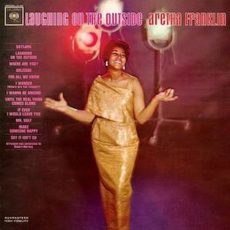
The Quarantined Jazz Voyager
The variants are still plaguing society and yet most are taking a casual attitude in dealing with health. Understand it takes a village for all of us to get past this, to coin a phrase. Those of us who have had friends and family pass due to Covid~19 know the loss of loved ones. Stay vigilant people.
So, for those of you who are not familiar with the jazz side of the Queen Of Soul, allow this to be your introduction to the other side of her interpretive talent. This week I am pulling from the shelves one of her classic albums, Laughing On The Outside. It is the fourth studio album by Aretha Franklin, recorded at Columbia Recording Studios, in New York City on April 17, 1963 and on June 12–14, 1963 in Hollywood, California. It was released on August 12, 1963, by Columbia Records.
These sessions found a 21-year-old Aretha stepping away from her gospel roots and recording jazz and popular music standards, from Johnny Mercer to Betty Comden to Duke Ellington. She is backed by the arrangements of Columbia producer Robert Mersey. One of the most popular songs from the album is her interpretation of the classic Skylark. This was also one of the first times she recorded one of her written compositions, I Wonder (Where Are You Tonight), on an album.
Track Listing | 41:00
Side One
- Skylark (Johnny Mercer, Hoagy Carmichael) ~ 2:49
- For All We Know (Sam M. Lewis, J. Fred Coots) ~ 3:25
- Make Someone Happy (Betty Comden, Adolph Green, Jule Styne) ~ 3:48
- I Wonder (Where Are You Tonight)” (Aretha Franklin, Ted White) ~ 3:16
- Solitude (Duke Ellington, Eddie DeLange, Irving Mills) ~ 3:50
- Laughing on the Outside (Bernie Wayne, Ben Raleigh) ~ 3:14
Side Two
- Say It Isn’t So (Irving Berlin) ~ 3:05
- Until The Real Thing Comes Along (Sammy Cahn, Saul Chaplin, L. E. Freeman) ~ 3:04
- If Ever I Would Leave You” (Alan Jay Lerner, Frederick Loewe) ~ 4:04
- Where Are You? (Harold Adamson, Jimmy McHugh) ~ 3:50
- Mr. Ugly (Norman Mapp) ~ 3:22
- I Wanna Be Around (Johnny Mercer, Sadie Vimmerstedt) ~ 2:25
- Aretha Franklin ~ vocals
- Robert Mersey ~ producer, arranger, conductor
- Earl Van Dyke, Dave Grusin, Andrew Acker, Leon Russell ~ piano
- C. Bosler, Ray Pohlman, Melvin Pollan ~ bass guitar
- Hindel Butts, Hal Blaine ~ drums
- Don Arnome, Tommy Tedesco, Billy Strange ~ guitar
- Jimmy Nottingham ~ trumpet
- Robert Ascher ~ trombone
- Plas Johnson ~ saxophone
- Bernard Eichenbaum, Julius Schacter, Leo Kahn, Berl Senofsky, Felix Gigol, Max Pollikoff, George Ockner, John Rublowsky, Sid Sharp, Tibor Zelig, George Poole, Irving Lipschultz, Irving Weinper, Darrel Terwilliger ~ violin
- R. Dickler, Theodore Israel, Jacob Glick ~ viola
- Jesse Erlich, Anthony Twardowsky, Joseph Tekula ~ cello
More Posts: adventure,album,club,genius,jazz,museum,music,preserving,restaurant,travel,vocal
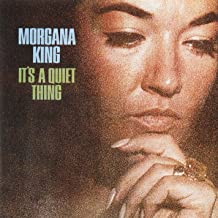
The Quarantined Jazz Voyager
Do what you desire to or not protect your health but be responsible for the health of your fellow man. This is my request. The children are spreading this far more than adults as I continue to hear reports from friends that they caught Covid from children who have greater exposure.
The album It’s A Quiet Thing from vocalist Morgana King is taken from the stacks representing the need for silence and reflection during this time of uneasiness. Produced by Jimmy Bowen, the album was recorded and released on the Reprise label in 1965 with arrangements by Torrie Zito brings us music reflective of the title.
Noise is not required to transport us to destinations that conjure memories. It’s class and sophistication that makes this an elegant compendium of songs. The arrangements and orchestration are equally soft and complimentary to her voice. Her incredible vocal range is backed by a menu of textured strings, guitar, French horn and bossa nova.
Artistry is something one has and when two purveyors connect we become privy to an excellent outcome. This happens to fill that order. So sit back, relax and listen.
Tracks | 31:27- It’s a Quiet Thing (Fred Ebb, John Kander) ~ 3:02
- Dindi (Ray Gilbert, Antonio Carlos Jobim, Aloysio de Oliveira) ~ 4:00
- Useless Landscape (Gilbert, Jobim, de Oliveira) ~ 3:12
- Gone with the Wind (Herbert Magidson, Allie Wrubel) ~ 2:58
- Little Girl Blue (Lorenz Hart, Richard Rodgers) ~ 3:35
- Mountain High, Valley Low (Bernie Hanighen, Raymond Scott) ~ 2:09
- How Insensitive (Norman Gimbel, Jobim, Vinícius de Moraes) ~ 3:14
- Here’s That Rainy Day (Johnny Burke, Jimmy Van Heusen) ~ 2:38
- Deep Song (George Cory, Douglass Cross) ~ 3:38
- If You Should Leave Me (E Se Domani) (Arthur Altman, Giorgio Calabrese, Al Stillman) ~ 3:01
- Morgana King ~ vocals
- Torrie Zito ~ arranger
More Posts: adventure,album,club,genius,jazz,museum,music,preserving,restaurant,travel,vocal
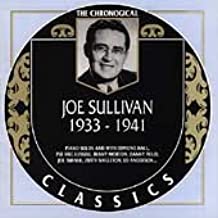
Daily Dose Of Jazz…
Arthur Shapiro was born on January 15, 1916 in Denver, Colorado, and began on trumpet at age 13, ultimately picking up bass as his prominent instrument at 18. By the late 1930s he was playing with Wingy Manone, Joe Marsala, Eddie Condon, and Chu Berry. From 1938 to 1940 he played with Paul Whiteman, then returned to play with Marsala in addition to working with Bobby Hackett.
Moving to Hollywood, California in the early 1940s, Artie started playing with Jack Teagarden and Joe Sullivan before serving in the United States Army. In 1947 he returned to music, playing with Benny Goodman.
As an accompanist, he worked with, among others, Billie Holiday, Peggy Lee, Anita O’Day, Doris Day, Bing Crosby and Frank Sinatra. His list of recording credits runs to more than 100 during his period of activity, stretching into the late 1960s. Bassist Artie Shapiro transitioned in Los Angeles, California on March 24, 2003.
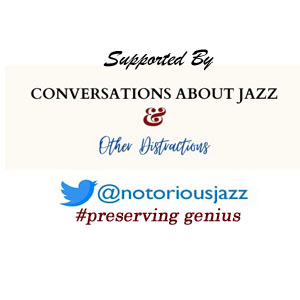
More Posts: bass,history,instrumental,jazz,music
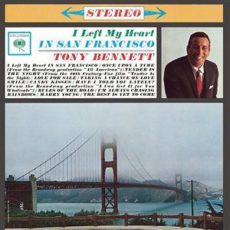
The Quarantined Jazz Voyager
I can only appeal to your sense of fair play that you quarantine, social distance and wear masks whenever you are out around people during this period of increased variants. It is a responsible person who takes the effort to protect others even when they do not have the desire to protect themselves.
This week I’m pulling from the stacks one of Tony Bennett’s highest selling albums of his career I Left My Heart In San Francisco. Released in 1962 on Columbia Records, it peaked at #5 on the Billboard pop albums chart, and has been certified platinum by the RIAA. Tony Bennett won two 1962 Grammy Awards for the title song: Record of the Year and Best Solo Vocal Performance, Male.
The album was produced by Ernie Altschuler and assembled around unused singles from earlier sessions. The previously released songs included the Cy Coleman/Carolyn Leigh songs The Best Is Yet to Come/Marry Young as well as Close Your Eyes/Rules of the Road, which were A&B sides respectively. Candy Kisses and Have I Told You Lately? were recorded in 1961. Tender Is the Night was later used in the 1962 film, while Charlie Chaplin’s Smile from Modern Times peaked at #73 on the Billboard Hot 100. It was the only other single that charted with San Francisco.
Three additional tracks were taken from sessions spanning 1957 to 1960. Taking a Chance on Love from the musical Cabin in the Sky, Love for Sale from The New Yorkers, and I’m Always Chasing Rainbows” from Oh, Look!. Bennett’s rescue of Once Upon a Time from All American gave him San Francisco instead, his signature song.
Tracks | 32:20
Side 1
- I Left My Heart In SanFrancisco (Douglass Cross, George Cory) ~ 2:52
- Once Upon A Time (Charles Strouse, Lee Adams) ~ 2:57
- Tender Is The NIght ( Sammy Fain, Paul Francis Webster) ~ 2:38
- Smile (Charlie Chaplin, Geoffrey Parsons, John Turner) ~ 2:49
- Love For Sale (Cole Porter) ~ 3:09
- Taking A Chance On Love (Cy Coleman, Carolyn Leigh) ~ 2:28
Side 2
- Candy Kisses (George Coleman) ~ 2:25
- Have I Told You Lately (Harold Rome) ~ 2:39
- Rules Of The Road (Cy Coleman, Carolyn Leigh) ~ 2:42
- Marry Young ((Cy Coleman, Carolyn Leigh) ~ 2:20
- I’m Always Chasing Rainbows (Harry Carroll, Joseph McCarthy) ~ 2:40
- The Best Is Yet To Come ((Cy Coleman, Carolyn Leigh) ~ 2:28
- Tony Bennett ~ vocals
- Ralph Sharon ~ piano; arrangements on Love for Sale
- Candido Camero, Sabu Martinez, Billy Exiner ~ percussion on Love for Sale
- The Count Basie Orchestra ~ instruments and arrangements on Taking A Chance on Love
- Marty Manning ~ arrangements on San Francisco, Once Upon A Time, Tender is the Night, Candy Kisses, Have I Told You Lately?
- Cy Coleman ~ arrangements on Marry Young, The Best Is Yet to Come
- Ralph Burns ~ arrangements on Smile, Rules of the Road
- Frank De Vol ~ arrangements on I’m Always Chasing Rainbows
More Posts: adventure,album,club,genius,jazz,museum,music,preserving,restaurant,travel,vocal
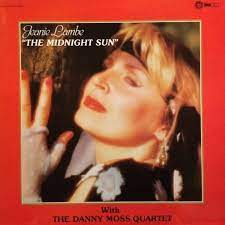
Daily Dose Of Jazz…
Jeanie Lambe was born on December 23, 1940 in Glasgow, Scotland. Her mother was a singer and her father played the accordion in the musical act Douglas, Nicol & Lamb. Her first public performances were with her parents and when she was seventeen, she became a member of the Clyde Valley Stompers.
She was the vocalist with the Alex Sutherland Sextet at Elgin’s Two Red Shoes Ballroom, where she kicked off the Two Red Shoes dances at age 19. Moving to London, England in 1960 Jeanie worked with a variety of jazz bands in the area, including those led by Alex Welsh, Kenny Ball and Charlie Galbraith. In 1964 she married tenor saxophonist Danny Moss and became more well known through her extensive performances at international jazz festivals.
Lambe has performed with modern and mainstream jazz musicians including Cliff Hardie and the UK All Stars Orchestra, Bobby Rosengarden, Monty Alexander, Ben Webster, Budd Johnson, Oscar Peterson, Wild Bill Davison, Kenny Davern, Joe Pass and Buddy Tate.
Suffering ill health, vocalist Jeanie Lambe, who recorded seven albums as a leader, passed away on May 29, 2020 in Perth, Australia at the age of 79.
More Posts: bandleader,history,instrumental,jazz,music,vocal


